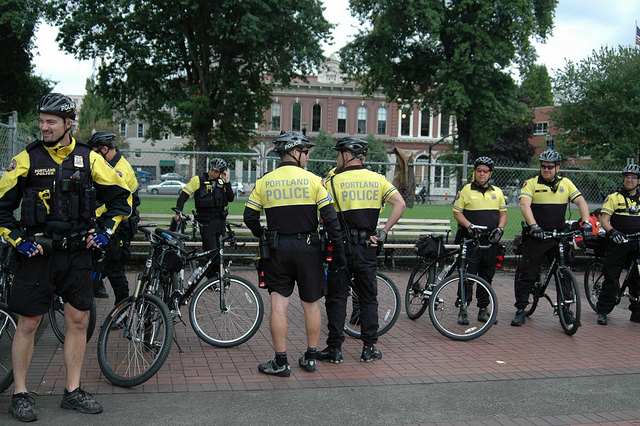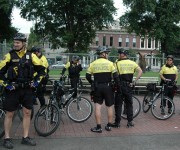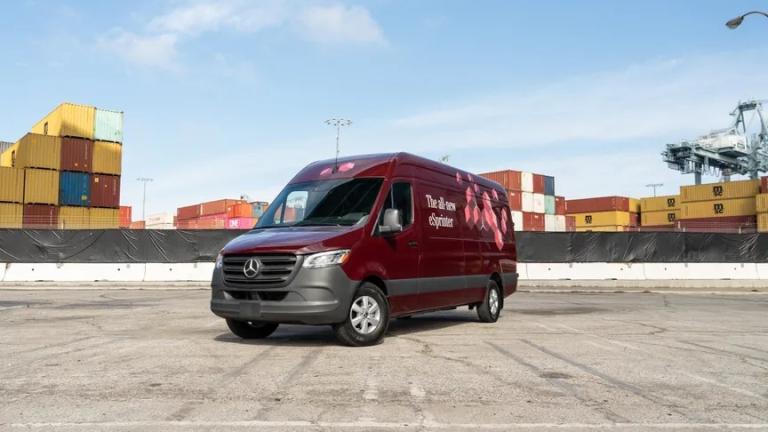My hometown got in on the occupation on Thursday, as a few hundred people came out for an Occupy Portland march downtown. Last week, I wrote about the interplay between the Occupy Together movement in cities like New York and Chicago and the monthly bicycle rally, Critical Mass. The topic was on my mind as I headed down to the march, half expecting to find the same symbiotic relationship between people on two wheels and those on two feet. It was there — but not in the way I expected.
As I approached the heart of the protest, I saw bicycles — hundreds of them — locked to every railing, fence, and signpost available. People had arrived by bike, but the crowd was so tightly packed as to make bicycling through it impossible, and few rode bikes in the march that followed.
Several clusters of people stood by their bikes, ready to ride when the call to march came — but they all came with identical black Trek mountain bikes and sported the telltale black and yellow uniforms of Portland’s bicycle-mounted police squads.
 Photo: Elly Blue
Photo: Elly Blue
The bike police stood and sat in varying states of boredom and congeniality. One posed for photos with a baby. Occasionally, rally goers approached them with friendly words and smiles; others edged away with wary looks. As I photographed one assembly of officers with bikes, a protester said to me quietly “good work.” Perhaps he was thinking that I was, like many others, there to document any potential police malfeasance.
In retrospect, I should not have been surprised by the presence of the badged bike brigade. In Portland, the tradition of Critical Mass, strong throughout the ’90s and early aughts, has faded from the vernacular of political action and organizing. Meanwhile, Portland’s police department has been honing the use of bicycles in policing peaceful protests — particularly marches on foot. It’s typical of any political action around here to see a cadre of bike officers waiting in the wings, ready to whip around the block to strategically channel the slowly marching crowd along predetermined routes.
The demise of Critical Mass and the renaissance in bicycle policing are related. Back in 2005, a group of Portland Critical Mass participants, including myself, met with police. We asked that they not send police along on the peaceful rides. They demurred. The compromise — or so it seemed at the time — was that bicycle-mounted officers would join the rides on the last Friday of the month, rather than the usual squad of motorcycle police, unapproachable behind their helmets.
As a result, I got a firsthand, up-close view of Portland Police learning the fine art of crowd control by bike, via trial and error. The technique that they finally stuck with was riding side by side with Critical Mass participants, demanding that we ride single file in the door zone, regardless of the hazardous presence of streetcar tracks. The requests weren’t legally binding, but because we were trying to work together, we tried.
But we weren’t in a mass anymore — and the ride quickly ceased to be any fun at all. It was as though your dad crashed your party and sat inches away from you all night, smiling in a friendly way while insisting that you dump out your beer. Eventually everyone moved on to Portland’s wealth of other bike events.
I’ve yet to see another bicycle event policed by pedal-powered riders. But these days, the bicycle cops are out in force at other events, with friendly smiles and a determined presupposition that your mug contains more than just root beer.



